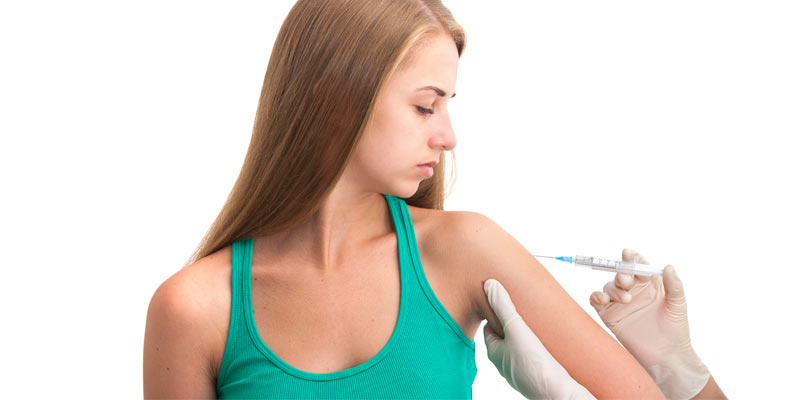
Adolescents who receive recommended vaccinations, including for human papillomavirus, have no increased risk of primary ovarian insufficiency, also known as premature menopause, according to a Kaiser Permanente study published today in Pediatrics.
Rates of HPV vaccination have lagged behind coverage rates for other recommended adolescent vaccinations, such as tetanus-diphtheria-acellular pertussis (Tdap) and meningococcal conjugate. Based on national coverage estimates from 2016, 65 percent of 13-17 year-old females received at least one HPV vaccination and only 49.5 percent were up to date with the series, compared to about 88 percent of adolescents who received Tdap.
While large studies have demonstrated the safety of HPV vaccination, parental safety concerns — including potential impact on future fertility — are often cited as one reason for lower HPV coverage.
 Allison Naleway, PhD
Allison Naleway, PhD
“Reports of premature menopause after HPV vaccination have received a lot of media attention, including on social media,” said Allison Naleway, PhD, lead author and investigator with the Kaiser Permanente Center for Health Research in Portland, Oregon. “However, these reports were based on a small number of isolated cases and must be interpreted with caution. To bring clarity to this issue, we conducted a study of nearly 200,000 young women and found no elevated risk of POI after HPV or other recommended vaccinations.”
Naleway and her team began by identifying 199,078 females age 11-34 with at least 30 days of health plan membership at Kaiser Permanente in the Northwest from August 2006 (when HPV vaccines became available at Kaiser Permanente) through the end of 2014. The study period was selected to maximize the potential number of POI cases. Researchers followed these female members until health plan disenrollment, their 35th birthday, or the end of the study period, whichever came first.
During the study period, 119,078 females received Tdap, 84,783 received flu vaccine, 58,871 received the HPV vaccine, and 46,231 received meningococcal conjugate.
In addition to examining Kaiser Permanente’s electronic health record database, the researchers manually reviewed the presumptive cases of POI they found. Researchers excluded cases of POI with a known cause (for example, genetic conditions or surgical removal of the ovaries), as well as miscoded diagnoses and cases with symptom onset prior to August 2006. Of the remaining 28 cases, only one was vaccinated against HPV prior to the onset of POI symptoms.
“In a population of 58,871 young women who received the HPV vaccine during the study period, we found only one case of an individual who possibly had symptoms of primary ovarian sufficiency after vaccination,” said Naleway. “If POI is triggered by the HPV vaccine or another recommended adolescent vaccine, we would have expected to see higher incidence in the younger women who were most likely to be vaccinated. But we found no elevated risk for these individuals.”
The study was conducted under the auspices of the Vaccine Safety Datalink, a collaborative project involving eight integrated health care delivery systems and the U.S. Centers for Disease Control and Prevention.
“The safety of adolescent vaccines is important to CDC, as it is for parents and health care providers,” said co-author Julianne Gee, MPH, epidemiologist, Immunization Safety Office, CDC. “While the safety of these vaccines is well established, this important study offers additional population-based, scientific evidence that HPV and other adolescent vaccines do not negatively impact fertility in young women.”
The study was supported by the U.S. Centers for Disease Control and Prevention (Task Order 200-2012-53584-0006). The findings and conclusions in are those of the authors and do not necessarily represent the official position of the Centers for Disease Control and Prevention.